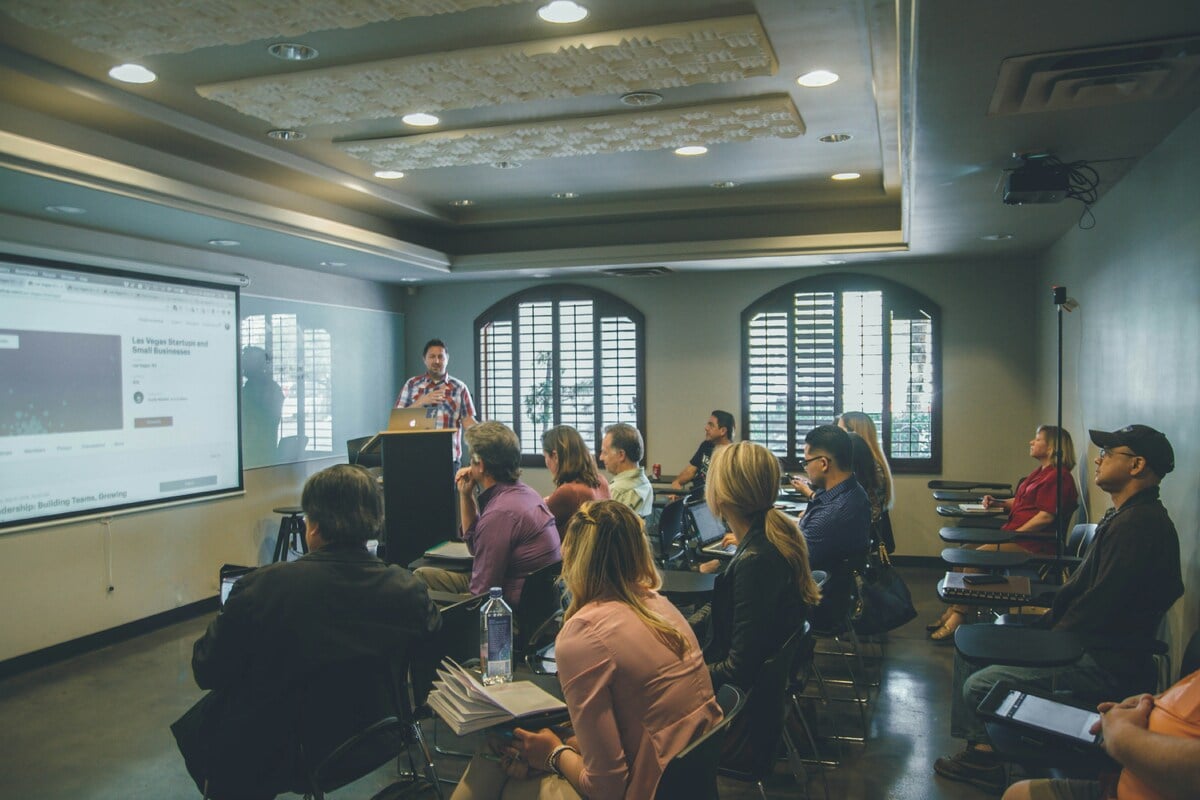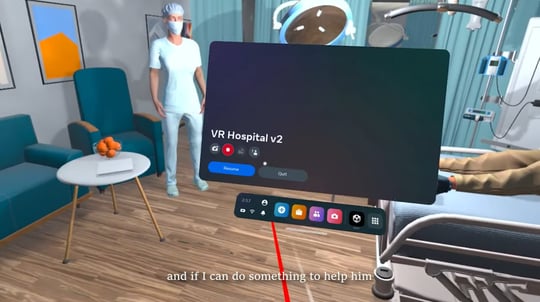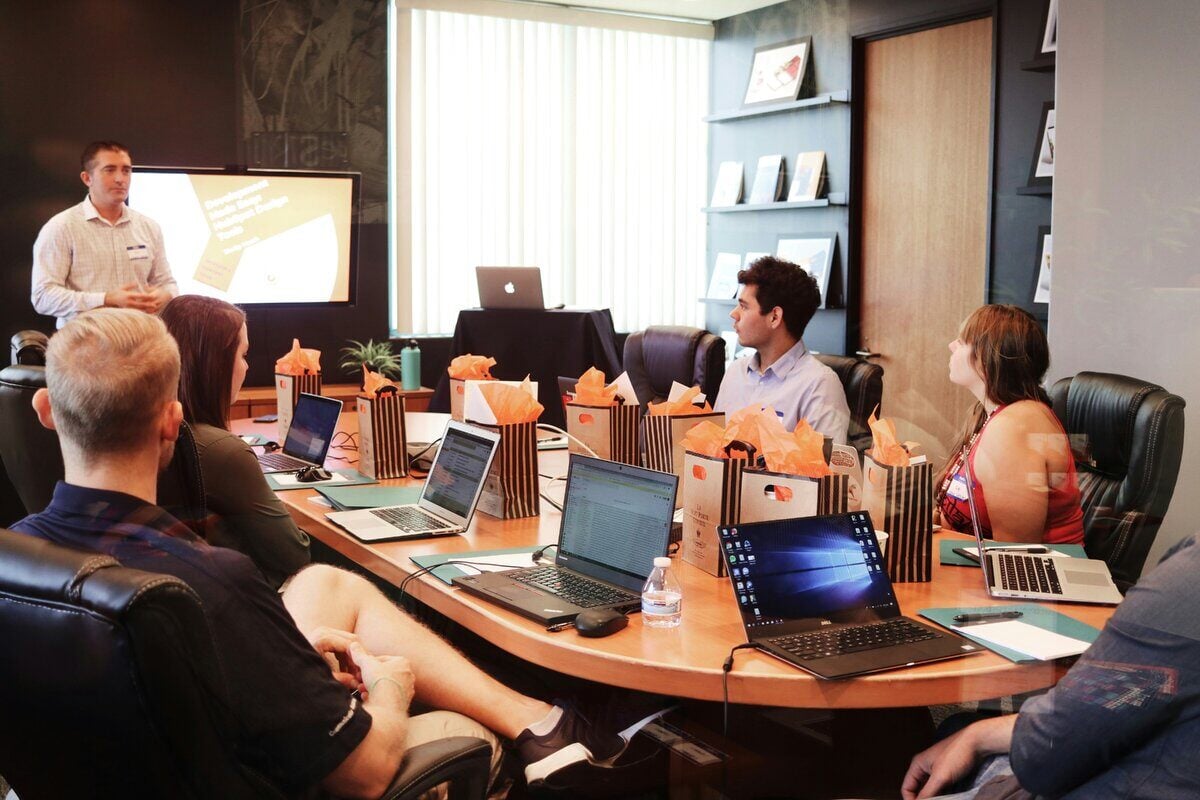
Learning That Feels Real: The Power of Authentic Workplace Contexts
Organizations that prioritize meaningful professional development outperform their competitors across virtually all business metrics1. It's no surprise that 92% of employees report that well-designed training programs positively impact their engagement levels2.
Yet despite the clear benefits for both employers and employees, many workplace learning initiatives fall flat. The diagnosis is straightforward: they simply don't feel real.
The Authenticity Gap in Professional Learning
Traditional workplace training often follows a predictable pattern. Learners sit through standardized presentations, absorb pre-packaged information, and demonstrate their 'knowledge' by passing a multiple-choice test. This approach prioritizes convenience and scalability over effectiveness.
The result? A significant disconnect between training and application.
When Monday morning arrives, these newly 'trained' employees struggle to apply what they've learned in the messy, complex reality of their actual work environments. This isn't a reflection of their abilities or motivation—it's a fundamental flaw in how the learning experience was designed.
Why Authentic Contexts Matter
Learning that truly transforms performance requires more than information delivery—it demands authentic contexts that mirror the actual conditions where skills will be applied. Our brains are wired to learn differently when presented with realistic scenarios:
The Neuroscience of Contextual Learning
Real-world knowledge isn't stored in isolation like facts in a filing cabinet. Instead, effective learning connects information with emotions, sensory cues, decision points, and practical experiences. These rich neural networks make knowledge retrieval faster and more reliable when faced with on-the-job challenges.
Without authenticity, learning remains abstract—disconnected from the contexts where it must be applied. Learners might understand individual concepts but struggle to integrate them when facing complex situations with competing priorities and incomplete information.
Bridging the Transfer Gap
Knowledge transfer—the ability to apply learning in new contexts—represents the ultimate goal of any training program. Traditional approaches create a significant transfer gap that authentic learning environments effectively bridge.
When you learn within environments that closely resemble your workplace—using the same tools, facing similar time pressures, and navigating comparable challenges—you build contextual fluency. You don't just know what to do; you know how to do it within the specific constraints and opportunities of your role.
Designing Learning That Feels Real
Creating authentic workplace learning experiences requires intentionality and a systematic approach. Here are proven strategies for designing learning that resonates with real-world application:
1. Simulation and Problem-Based Learning
Simulations provide safe spaces to practice tasks that closely mirror real responsibilities. These can range from high-fidelity virtual environments to simple role-playing scenarios, depending on your specific needs.
The key advantage is that simulations allow learners to make decisions, experience consequences, and adapt strategies—all within controlled conditions that promote reflection and growth.

Problem-based learning complements simulation by shifting from content delivery to active problem-solving. Instead of receiving all information upfront, learners engage with challenges that require investigation, collaboration, and decision-making—mirroring how problems actually emerge in professional settings.
2. Contextual Constraints and Tools
Authentic learning incorporates the actual tools, timeframes, and systems learners will use on the job. If employees need to master specific software, the training environment should include the exact interface—not just screenshots or generic demonstrations.

Time pressures, competing priorities, and typical interruptions should all be thoughtfully integrated into the learning design. These aren't distractions to eliminate but essential elements that build contextual fluency.
3. The LEM Blueprint Approach
The Learning Environment Mapping (LEM) blueprint provides a structured framework for designing authentic learning experiences. This visual system helps identify the key components of the work environment that impact performance:
- What specific tasks must learners perform after training?
- What systems will they use to accomplish these tasks?
- What constraints (time, accuracy, resources) will they face?
- What critical decisions must they make?
By systematically addressing these questions, the LEM blueprint creates alignment between learning design and workplace realities.
Real-World Applications
Understanding authentic workplace contexts becomes clearer through concrete examples:
Customer Support Training
Instead of simply reviewing communication guidelines, customer support training can incorporate interactive simulations that mirror actual support tools. Learners navigate the CRM interface, respond to diverse customer personas, and manage typical workday flows—including sudden escalations and technical troubleshooting.
By practicing within environments that reflect real-world dynamics, team members develop both technical skills and adaptive capabilities essential for delivering exceptional customer experiences.
Technical Skills in Manufacturing
Organizations that implement learning environments aligned with workplace realities see profound benefits:
- Accelerated proficiency - Employees apply new skills more quickly and confidently
- Reduced implementation gaps - The transition from training to application becomes seamless
- Higher engagement - Learners recognize the relevance and value of their learning experiences
- Improved retention - Knowledge connected to realistic contexts stays accessible longer
- Enhanced problem-solving - Employees develop adaptability that transfers across situations
The LX Studio Approach
At LX Studio, we specialize in transforming traditional training into authentic learning experiences that deliver measurable results. Our approach combines:
- Research-driven methodology - Our design principles incorporate the latest findings from cognitive science, adult learning theory, and performance improvement research
- Innovative design frameworks - Our proprietary tools like the LEM blueprint provide systematic approaches to aligning learning with workplace realities
- Practical implementation expertise - We bridge theory and practice, creating solutions that work within real organizational constraints
We believe that learning should never feel artificial or disconnected from the contexts where it matters most. Through thoughtful design and systematic implementation, we help organizations create learning experiences that feel real—because they're built to reflect the authentic complexities of actual workplace environments.
Interested in creating learning experiences that prepare your team for real-world performance challenges? Contact the LX Studio team today to explore how our research-driven, innovative approach can transform your learning initiatives.





